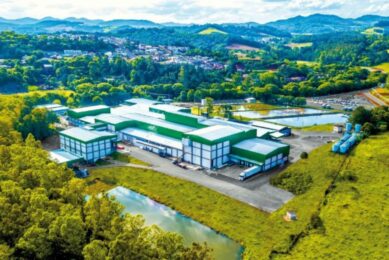Pork industry to meet growing demand

With meat, milk, and egg prices reaching record levels, already the effects of growing population can be seen. A new report from Elanco indicates 50% more pork by 2050.
In the next few decades, the global population will reach 9 billion people, and more than 3 billion will enter the middle class. In fact, the fastest period of growth will occur in just the next 6 years. Elanco assembled a team of experts to study this situation, creating the Global Food Forward Analysis, a model which has been validated by Informa Economics and Global AgriTrends. The latest report evaluates future demand for pork, which is the most widely consumed meat in the world.
Unlike milk and eggs, availability of pork per person has doubled since 1961 from 5.4 oz to 10.7 oz per week. By 2050, the analysis shows we will need about 1 more ounce per person per week to meet global demand. While it sounds simple, that means the industry will need to increase production by 61 million tons to total 179 million tons.
“Our research shows that pork producers are making great strides in production efficiency. In fact, the industry can meet future demand on fewer resources than were used in 2010,” said Rob Aukerman, president of U.S. Operations for Elanco. “But it requires the right approach. It requires acceptance of innovation and best practices, and the ability to bring new technologies and practices to the market. Otherwise, this story could go the other way.”
Today, 1.38 billion pigs are raised globally. Without additional access to innovation, the industry would need to add 710 million more pigs to provide consumers the 12 oz of pork they will expect each week in 2050. This approach would also require about a 50 percent increase in resource use.
But with expanded access to innovation, farmers can produce 50 percent more pork with only 1.7 billion pigs and fewer resources than they currently use, annually saving:
• 484 million tons of feed, which would fill enough rail cars to circle the Earth’s equator twice!
• 262 million acres, equivalent land the size of Texas and California combined
• 260 billion gallons of water, the same annual household consumption of New York City and Philadelphia combined.
With the global population already overusing Earth’s resources, these are critical savings that must be achieved. But, it means supporting policies and practices that allow producers to optimize efficient production. This becomes clear when comparing average global production to today’s leaders.
Today, the average pig grows to 229 lbs. in 38.6 weeks. Leading producers are raising pigs that are 44 lbs. heavier and far more efficient, reaching market weight about 70 days earlier. To achieve future needs, the new research shows pigs will need to be 9 lbs heavier than today’s leaders and reach that weight about 3 weeks earlier.
“With a growing global population and increasing demand for meat, milk and eggs, our industry must continue to innovate and bring novel, safe technology to the market that will help producers deliver more pork in a sustainable way,” Aukerman said.











